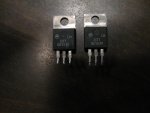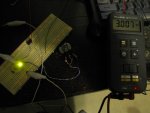I was wondering if anyone knew any common electronic gadgets/appliances that commonly used the LM317 voltage/current regulator?
My local radio shack locations are really poor about keeping components in stock and as is the case everywhere, they are mostly a cell phone store now. I will probably end up ordering 10 or so from Digikey/Mouser, but for right now, I'd like to just take apart something like an old PC power supply and find a nice regulator that I could use to push something like 1.5a or more through a pump diode...or at least one amp.
-Brett
My local radio shack locations are really poor about keeping components in stock and as is the case everywhere, they are mostly a cell phone store now. I will probably end up ordering 10 or so from Digikey/Mouser, but for right now, I'd like to just take apart something like an old PC power supply and find a nice regulator that I could use to push something like 1.5a or more through a pump diode...or at least one amp.
-Brett








